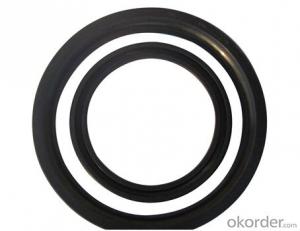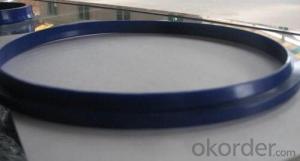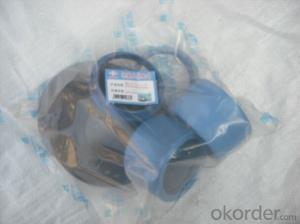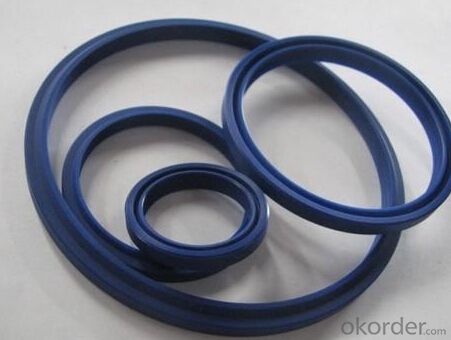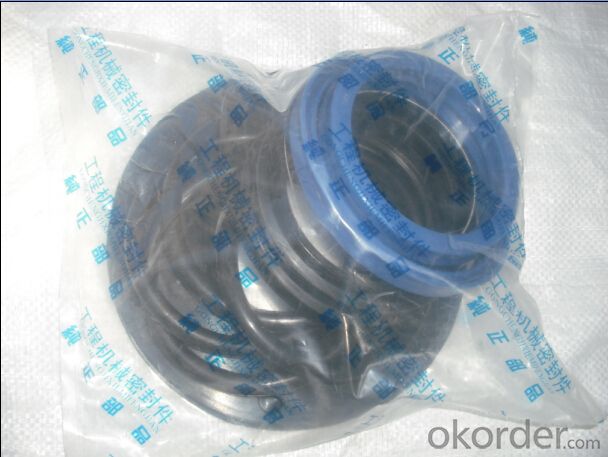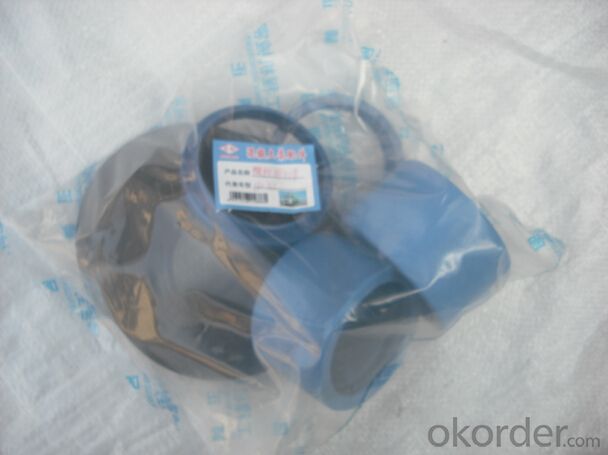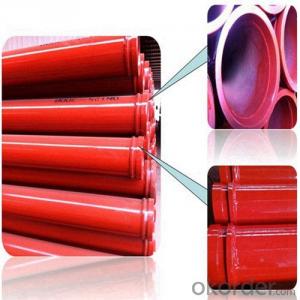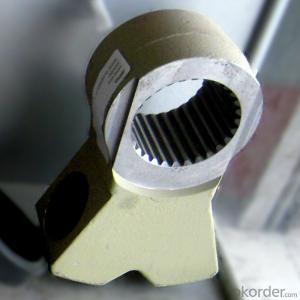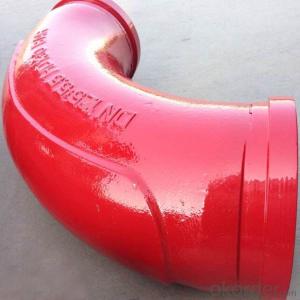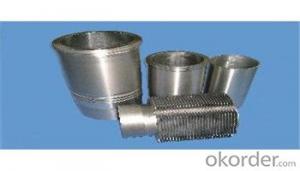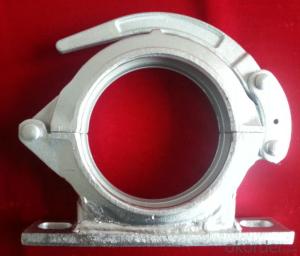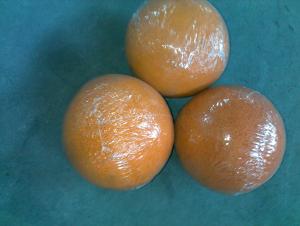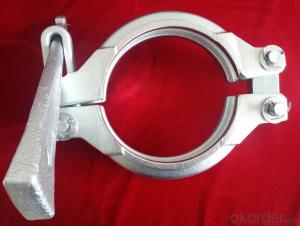ZOOMLION 90 SEAL KIT FOR CYLINDER HIGH QUALITY
- Loading Port:
- Tianjin
- Payment Terms:
- TT OR LC
- Min Order Qty:
- 10 set
- Supply Capability:
- 500 set/month
OKorder Service Pledge
OKorder Financial Service
You Might Also Like
ZOOMLION 90 SEAL KIT FOR CYLINDER HIGH QUALITY
Specifications
Name: Concrete Pump Zoomlion seal kit
colors:black,blue,brown and so on
materials:NBR,BR,NR,SBR and EPDM
Concrete pump zoomlion seal kit for upper housing
seal kit for agitator motor
seal kit to outer housing
seal kit for discharge pipe
seal kit for delivery cylinder
seal kit for plunger cylinder
Seal kit for main cylinder
SEAL KITS PUTZMEISTER,SCHWING, SANY, ZOOMLION
SPARE PARTS FOR CONCRETE PUMP
--AGITATOR MOTOR
--S TUPE FOR 80&90
--MIXER SHAFT
--MIXER FLANGE
--ROCK VALVE
--PLUNGER CYLINDER
--SLEWING SHAFT
--SEAL KITS FOR CYLINDER
--DELIVERY PIPES & ELBOW
--DELIVERY PISTON RAM
--CLAMPS FOR SCHWING AND PUTZMEISTER
--SCHWING SPARE PARTS
--PUTZMEISTER SPARE PARTS
--CIFA SPARE PARTS
--KYOKUTO SPARE PARTS
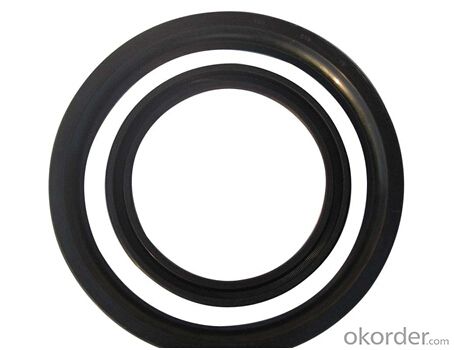
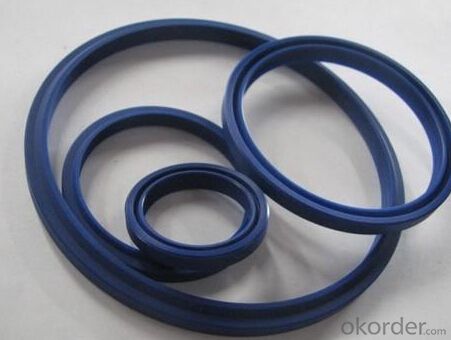
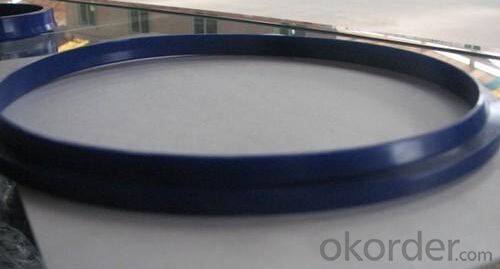
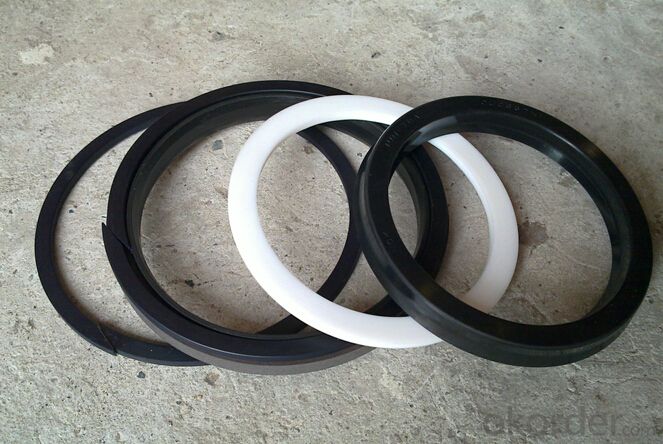
- Q: How can a faulty filter affect the pumping process?
- The pumping process can be significantly affected by a faulty filter in various ways. To begin with, the flow of fluid through the pump may be hindered if the filter becomes clogged or blocked. This can lead to reduced efficiency and increased energy consumption as the pump must exert more effort to overcome the resistance caused by the obstructed filter. Additionally, the decreased flow rate can result in longer pumping times, which can be problematic in time-sensitive applications. Moreover, a faulty filter may not effectively eliminate impurities or contaminants from the fluid being pumped. This can be particularly troublesome in industries where maintaining the purity or cleanliness of the fluid is crucial, such as in pharmaceutical or food processing applications. The presence of contaminants can jeopardize the quality of the final product or cause damage to equipment downstream from the pump. Furthermore, increased maintenance and repair costs can be a consequence of a faulty filter. If the filter is not functioning properly, it may allow larger particles or debris to pass through, which can cause damage to the pump components. This can result in heightened wear and tear, a shorter lifespan for the pump, and the need for more frequent repairs or replacements. Finally, a faulty filter can pose a risk to the overall system and its components. Complete failure of the filter can allow foreign objects or particles to enter the pump, potentially leading to blockages, damage to internal components, or even total pump failure. This can result in costly downtime, loss of production, and the need for emergency repairs or replacements. In conclusion, a faulty filter can have negative effects on the pumping process, including decreased efficiency, compromised fluid quality, increased maintenance costs, and potential damage to the pump and system components. Regular inspection, maintenance, and timely replacement of filters are crucial to ensure smooth and reliable operation of pumps in various industries.
- Q: What is the function of a concrete pump hopper grate pin?
- The function of a concrete pump hopper grate pin is to secure the hopper grate in place and prevent it from dislodging or shifting during the concrete pumping process. The pin acts as a mechanism to lock the grate into position, ensuring that it remains stable and does not pose any safety risks or cause disruption to the pumping operation. Additionally, the pin allows for easy removal and replacement of the grate when necessary, facilitating maintenance and cleaning of the hopper. Overall, the concrete pump hopper grate pin plays a crucial role in maintaining the integrity and efficiency of the concrete pumping equipment.
- Q: How does a hopper agitator motor ensure consistent concrete mixing?
- Consistent concrete mixing is guaranteed with the use of a hopper agitator motor, which is responsible for providing the required agitation and movement within the hopper. By rotating and moving the agitator blades, the motor effectively mixes the concrete ingredients. The main purpose of the hopper agitator motor is to avoid the settling or separation of the concrete during the mixing process. Through its rotation, a swirling motion is generated inside the hopper, ensuring even distribution and thorough blending of all the ingredients. This prevents any formation of clumps or irregularities in the final concrete mixture. Moreover, the motor also aids in breaking up any lumps or clusters that may have formed within the hopper. This action further enhances the uniformity of the mixture, ensuring proper blending of components such as cement, aggregates, water, and additives. Furthermore, the continuous movement of the agitator blades helps in maintaining the desired consistency and homogeneity of the concrete mix. It prevents heavier particles from settling at the bottom of the hopper, ensuring consistent mixture throughout the entire mixing process. In conclusion, the hopper agitator motor is of utmost importance in achieving consistent concrete mixing. Its role includes providing necessary agitation, preventing segregation, breaking up lumps, and maintaining uniformity. The motor's rotational motion and well-designed agitator blades contribute to well-mixed and homogeneous concrete, which is crucial for durable and high-quality concrete structures.
- Q: Are there any specific guidelines for the installation of pipe or hose assemblies in concrete pump spare parts?
- Yes, there are specific guidelines for the installation of pipe or hose assemblies in concrete pump spare parts. These guidelines ensure proper installation techniques are followed to ensure the assemblies are securely and correctly installed. It is important to consult the manufacturer's instructions and adhere to industry standards to ensure optimal performance and safety of the concrete pump spare parts.
- Q: How does a concrete pump S valve function?
- Controlling the flow of concrete from the hopper to the discharge outlet is the primary function of the S valve in a concrete pump. This valve is a critical component in the concrete pumping system, enabling the accurate and efficient delivery of concrete to the intended destination. The S valve comprises two distinct valves, one on each side, connected by a central shaft. These valves are shaped like the letter "S," hence the name. Each valve possesses a concrete outlet and a hydraulic cylinder that governs its movement. When the concrete pump is activated, the hydraulic system exerts pressure on the cylinders, causing them to extend and open the valves. This opening enables the flow of concrete from the hopper into the pump's cylinder. Once the concrete enters the cylinder, the hydraulic system reverses the pressure on the cylinders, prompting them to retract. This retraction movement closes the valves, effectively sealing the cylinder and preventing any concrete from flowing backward. As the cylinder retracts, it propels the concrete towards the discharge outlet. The pressure generated by the cylinder's retraction forces the concrete through the outlet pipe, directing it to the desired pouring location. The ingenious design of the S valve ensures a seamless and uninterrupted flow of concrete, eliminating any potential interruptions or obstructions. Moreover, it grants operators a high level of control over the concrete placement, enabling them to adjust the flow rate and direction according to their requirements. In conclusion, the concrete pump S valve assumes the crucial role of regulating the concrete flow, guaranteeing its efficient and precise delivery to the intended destination. Its dependable and effective operation is indispensable for the success of concrete pumping operations.
- Q: How long does it take to receive concrete pump spare parts after placing an order?
- The time it takes to receive concrete pump spare parts after placing an order can vary depending on several factors. Firstly, it depends on the availability of the specific spare parts you have ordered. If the parts are readily available in stock, the delivery time can be relatively quick. However, if the parts are not in stock and need to be manufactured or sourced, it may take longer to receive them. Secondly, the location and distance between the supplier and your location also play a role in the delivery time. If the supplier is in close proximity, the parts can be delivered within a few days. However, if the supplier is located far away or in a different country, it may take longer due to shipping and customs processes. Furthermore, the shipping method you choose can also impact the delivery time. Expedited shipping options can ensure quicker delivery, but at an additional cost. Standard shipping methods may take longer but are usually more cost-effective. Lastly, the efficiency and responsiveness of the supplier also come into play. A reliable supplier with a streamlined ordering and shipping process will likely be able to deliver the spare parts in a shorter time frame. In conclusion, the time it takes to receive concrete pump spare parts after placing an order can vary based on factors such as availability, location, shipping method, and supplier efficiency. It is advisable to inquire about estimated delivery times when placing the order to have a better understanding of when the parts will be delivered.
- Q: How do I properly adjust and control flow rates in concrete pump spare parts?
- To properly adjust and control flow rates in concrete pump spare parts, there are a few key steps to follow: 1. Understand the equipment: Familiarize yourself with the specific concrete pump spare parts you are working with. Read the user manual and refer to any documentation provided by the manufacturer. This will help you gain a comprehensive understanding of the equipment's capabilities and how to adjust flow rates effectively. 2. Check the pump settings: Before starting any concrete pumping operation, ensure that the pump settings are properly configured. This includes checking the hydraulic pressure, engine RPM, and any other relevant settings. Make sure all valves and controls are in the correct position for the desired flow rate. 3. Monitor the pump speed: The speed of the pump directly affects the flow rate of the concrete. Different concrete mixtures may require different pump speeds to achieve the desired flow rate. Adjust the engine RPM accordingly, referring to the manufacturer's recommendations and any specific requirements for the project. 4. Adjust the pump stroke: Most concrete pumps have adjustable pump strokes to control the flow rate. By changing the length of the stroke, you can increase or decrease the volume of concrete being pumped. Experiment with different stroke lengths to find the optimal flow rate for your specific application. 5. Use the control panel: Many concrete pumps come equipped with a control panel that allows for precise adjustment of flow rates. Take advantage of these features to fine-tune the flow rate. Use the control panel to monitor the pump's performance and make any necessary adjustments to maintain a consistent flow. 6. Regularly inspect and maintain the equipment: Proper maintenance is crucial to ensure the accurate adjustment and control of flow rates. Regularly inspect the concrete pump spare parts for any signs of wear or damage. Clean and lubricate the components as recommended by the manufacturer. A well-maintained pump will operate more efficiently and provide more accurate control over flow rates. By following these steps, you can properly adjust and control flow rates in concrete pump spare parts. Remember to always prioritize safety and consult the manufacturer's instructions and guidelines for specific recommendations and considerations.
- Q: Why would the plugging concrete pump pipe
- When it is found that a bucket of concrete slump is very small, can not pump, should be in time the concrete from the bottom of the hopper release, if seeking trouble, forced pumping, easy to cause blockage. Avoid stirring with water in the hopper
- Q: What is the importance of a concrete pump control valve?
- A concrete pump control valve is important because it allows for precise control and regulation of the flow rate and pressure of concrete being pumped. This ensures that the concrete is delivered accurately and efficiently to the desired location, preventing wastage and improving overall productivity of the construction process. Additionally, the control valve prevents blockages and potential damage to the pump by allowing operators to adjust the flow as needed, maintaining a smooth and continuous operation.
- Q: What are the different types of concrete pump hopper screens?
- There is a wide range of hopper screens available for concrete pumps, each designed to meet specific needs and requirements. 1. The wire mesh screen is the most commonly used type. It is made of woven wire mesh and prevents large debris or aggregates from entering the pump system. These screens come in various sizes and can be easily replaced when worn or damaged. 2. Perforated plate screens are made of solid metal plates with small holes or perforations. They are particularly effective in preventing fine particles or sediments from entering the pump system. Perforated plate screens are more durable than wire mesh screens and can withstand heavy-duty applications. 3. Polyurethane screens are made of polyurethane material, which has excellent resistance to abrasion and wear. These screens are commonly used in high-performance concrete pumps that handle abrasive materials. They are highly durable and can be easily cleaned or replaced when necessary. 4. Some concrete pump hoppers are equipped with a vibrating screen, which separates and removes solids or debris from the concrete mixture. The vibrating screen uses vibration to facilitate the separation process, ensuring a cleaner and more consistent concrete flow. 5. Self-cleaning screens are designed with a mechanism that prevents clogging and maintains an uninterrupted concrete flow. These screens, usually made of wire mesh or perforated plate, use mechanical or pneumatic methods to automatically remove debris from the screen surface. When selecting a hopper screen, it is crucial to consider the specific requirements of your concrete pumping operation. Factors such as aggregate size, presence of fine particles, and abrasiveness should be taken into account to ensure optimal performance and longevity.
Send your message to us
ZOOMLION 90 SEAL KIT FOR CYLINDER HIGH QUALITY
- Loading Port:
- Tianjin
- Payment Terms:
- TT OR LC
- Min Order Qty:
- 10 set
- Supply Capability:
- 500 set/month
OKorder Service Pledge
OKorder Financial Service
Similar products
Hot products
Hot Searches
Related keywords
